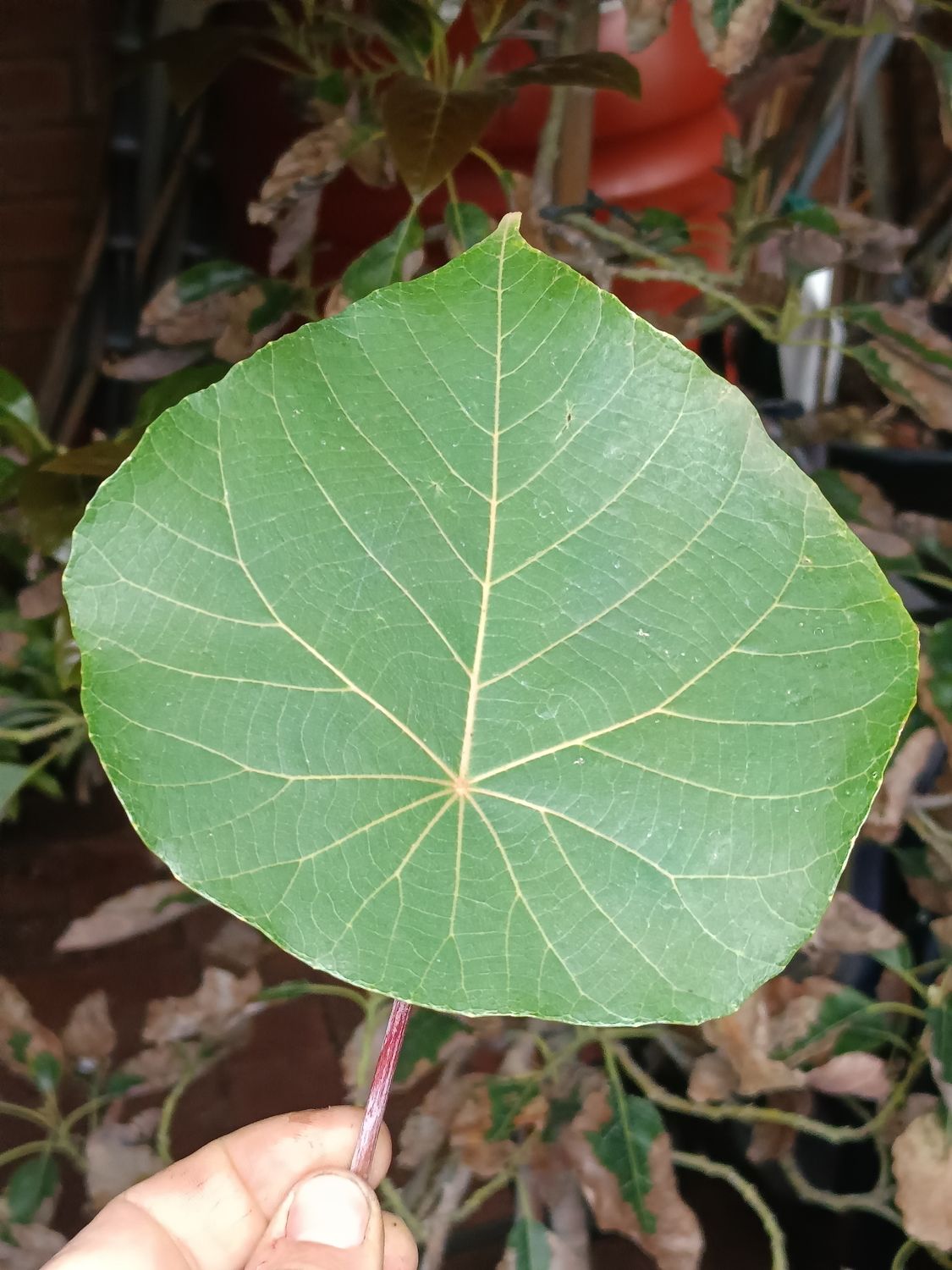Parasol Tree
Features:
Ideal prune height: 2–6 m
pH range: 5.5–8.5
Sun preference: Full sun or part shade
Minimum pot size by year 5: 45 L
Time to fruit: with 18 months, male and female plants needed
Harvest period: valued for leaves, growth, and sap
Notable traits: Fast-growing, early successional, attractive to pollinators, traditional resin and fibre use.
Grows well in coastal and subtropical areas but adapts inland with water during establishment. It tolerates sandy and degraded soils and makes an excellent nurse tree or shade canopy for young plantings in food forests or bush gardens. Often used in reforestation and land healing projects.
A beautiful and useful Australian native with both practical and ecological value.
In Southeast Asia, especially the Philippines, the leaves of Macaranga tanarius are sometimes used to wrap food for cooking, adding mild flavour and keeping moisture in. The small fruits may also be used to flavour bitter herbal drinks. While not widely eaten, the tree is valued for its sticky resin (used as glue), fast growth, shade, and usefulness in reforestation.
In Sri Lankan culture, the young leaves of the closely related Macaranga peltata are a key ingredient in kola kenda, a traditional herbal porridge used for cleansing and daily nourishment. The plant is also used in Ayurvedic medicine—its bark, resin, and leaves are believed to help treat fever, digestive upsets, wounds, and skin inflammation.
In Indian folk medicine, especially in Kerala and Tamil Nadu, the plant is known for its purgative and healing properties, often used in decoctions or poultices. Though not widely used for fruit, the tree plays an important role in forest healing, soil building, and traditional village medicine throughout its native range.
We do not know enough about how closely related these two are.
macaranga tanarius, parasol leaf tree, blush macaranga, native shade tree, erosion control tree, bushcraft tree Australia, Perth native trees
